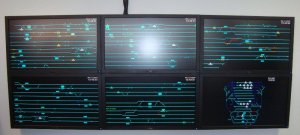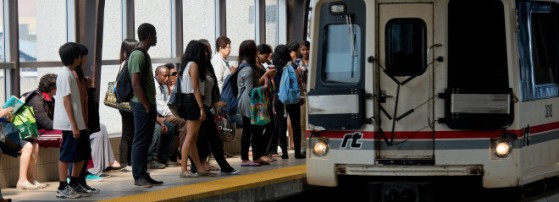SkyTrain technology is not outdated and not proprietary
We have reposted this from the blog of campaign founder Daryl Dela Cruz.
RE: Critics say SkyTrain technology is outdated – Global News
The new Tozai Line in Sendai, Japan uses SkyTrain technology – and is opening in just 7 days.
South Fraser blogger Nathan Pachal was incorrect in stating that Bombardier “dictates what we’re going to do in our region” in a recent interview with Global BC, and I couldn’t have been more disappointed at what he said. I couldn’t have been more disappointed with the report either, which claimed and brought attention to SkyTrain technology being “outdated” and a “boutique system is made by only one company.“
This is misleading and untrue, and I have proven this many times in my research and advocacy efforts throughout the past few years.
SkyTrain technology is proven, efficient, and used around the world in more than just a handful of cities. The idea that SkyTrain is a single-company offering, and that it’s outdated, comes down to a lot of miscommunication, misinformation and the sheer lack of information in discussion circles here. It’s important to get some perspective, so firstly…
What is “SkyTrain technology”?

Used in our Expo and Millennium Lines, SkyTrain technology basically comes down to two unique aspects:
- Automatic train control (ATC)
- Linear induction motor (LIM) propulsion
See: NEARLY ONE IN FOUR METRO CITIES HAS AT LEAST ONE AUTOMATED LINE
The former (automatic train control) has become the global standard in rapid transit, with more than 1 in 4 cities now having at least one automated metro line as part of their system, according to the Automated Metros Observatory. There are 732km of automated metro lines, and the observatory expects this to triple in the next 10 years.
I can imagine that the latter (LIM propulsion) has become the popular subject of contention – since only 5 systems have been built if you only count the systems installed by Bombardier.
However, if you count all of the other systems offered by other companies, LIM technology is now used in over 20 systems in cities around the world, including many busy, large-scale systems in China and in Japan.
Bombardier isn’t the only manufacturer of LIM cars
See also: List of Linear Induction Motor rapid transit systems

The biggest thing we misunderstand is that we think Bombardier is the “owner” of LIM technology and is the only manufacturer and provider of LIM cars. This is false.
In the city of Guangzhou, China, the world’s largest linear motor train system has over 100km of track. Already, three train lines in the city are using the technology and are responsible for carrying hundreds of thousands of passengers each day.
These are some of the newest subway lines that have been built in the city. One of them, line 6, opened just 2 years ago and is now the busiest line in the whole city.
The 3 Guangzhou metro lines use cars that were jointly manufactured by ITOCHU and CSR-Sifang. Meanwhile, in some of Japan’s biggest cities, Kawasaki Heavy Industries has manufactured LIM transit cars for systems serving hundreds of thousands of passengers a day in Kobe, Osaka and Tokyo.

Kawasaki isn’t the only Japanese manufacturer of LIM cars. The upcoming system in Sendai is being supplied by Kinki Sharyo, and the Fukuoka system was supplied by Hitachi.
The Oedo subway line in Tokyo, one of the busiest lines in the city, is using several different manufacturers’ offerings: the first generation cars were manufactured by Nippon Sharyo and Hitachi, while new-generation cars delivered just this year were made by Kawasaki Heavy Industries. Tokyo’s example is proving that more than one manufacturer can be the supplier of linear motor trains.
These companies aren’t unaware of each others’ presence and do work with (and compete with) each other. They have even collaborated on certain occasions (as an example, Bombardier supplied bogies for some of Guangzhou’s metro cars – while Mitsubishi supplied the actual linear motors).
These cities chose SkyTrain technology for various reasons, one of the most popular reasons being the reduction in tunnel sizes and – as a result – the reduction in capital costs for building the system. In Japan, SkyTrain technology systems are directly promoted as a way of saving money.
See: Linear Metro promotion page by Japan Subway Association
New systems are being announced and built very often, speaking to the success of this technology. The systems are responsible for moving many more people than even SkyTrain does – and do so reliably, every single day.
The newest system is opening in just 7 days in Sendai, Japan. I am looking forward to the launch celebrations.
Above: A promotional video for Sendai’s upcoming Tozai Line, showing the use of SkyTrain technology. The Tozai Line opens on December 6.
This technology is still very much being developed
Last month we were greeted by the arrival of the first “Mark III” SkyTrain vehicles. Bombardier’s Innovia Metro 300 product is the newest generation of Bombardier’s offering of SkyTrain technology. It has won orders here in Vancouver, for an expansion in Kuala Lumpur, Malaysia and – of all places – for a new rapid transit line in Riyadh, Saudi Arabia.
The renaming of what was previously called “ART” (Advanced Rapid Transit) into a “Metro” class product shows that Bombardier is as committed to keeping up with the development of linear motor propulsion technology, as its competitors are in China and Japan.
But what about all the breakdowns?
I’ve been feeling that SkyTrain technology critics would be motivated to speak as such due to the intensity of the recent SkyTrain breakdowns. For this, it’s important to get some perspective – particularly on what’s been causing some of these incidents to occur.

Many of the recent break-downs on SkyTrain have been made worse by a particular shortfall that was identified in the commissioned SkyTrain performance review.
In the 1990s, BC Transit decided not to add a simple component to the automatic train control system which would have allowed the system to recover more quickly when a train is stalled. Other driverless transit systems have installed this component and thus do not face this particular problem.
From the independent SkyTrain performance review:
The SELTRAC technology of the 1980s has been upgraded with new control and software elements. SkyTrain was upgraded to the 2nd generation of the SELTRAC technology in 1994. However, SkyTrain did not include the auto-restart module that was available. Therefore, in a temporary loss of communication from the VCCs or VOBCs, SkyTrain SELTRAC technology still requires each train to be manually introduced into the control computer system.
Averaging 5-10 minutes per train to enter the necessary data, this equates to approximately 5 hours to fully recover operations, as there are approximately 40-58 trains operating depending upon when a service delay related to a train control communication failure occurs.
TransLink has identified the addition of this system as an immediate priority, but it may not be happening for another 5 years as the installation is a complex undertaking.
If BC Transit installed it 21 years ago, it would have been in place before the Millennium Line was built and we would be saving a lot of time with recent issues.
See: Fast SkyTrain restart 5 years away – Surrey Leader

Other breakdowns simply amounted to – in the case of last week’s incident – misplacement; – in the case of one of the 2014 breakdowns – human error; or – in the case of both the recent birds nest fire and tree hitting train incident – sheer bad luck.
Perhaps some of these breakdowns have resulted from the particulars of how our system was designed. Regardless, any transit system is prone to a breakdown of some sort. There are many different reasons.
My last blog post (We can learn from Japan on transit delays/incidents) was about a similar transit mishap in Japan last week on the JR Kobe Line, due to a fallen power pole. This is a conventional electric train line with rotary motors.
And, it seems no one knew about this but on the same day (and at the same time) as the SkyTrain breakdown of this week, Seattle’s LINK Light Rail line faced a 3 hour closure and disruption, when a pedestrian was struck by a train on an at-grade section.
What about the Scarborough RT?

You definitely can’t excuse the fact that Toronto wants to shut down the Scarborough RT, one of the first SkyTrain lines built and in-service, and replace it with either an extension of the Eglinton Crosstown LRT on the same route – or an extension of the Bloor-Danforth Subway line.
However, I reckon that the conversion and replacement has more to do with the desire to provide a through service with these other lines and reduce transfers. From a transportation planning perspective, that’s a very natural thing to want to have. It’s part of why the City of Vancouver has preferred that the “Broadway Subway” be built as an extension of the existing Millennium Line and not in any other way.
However, it’s also importance to have some perspective. The Scarborough RT was the first SkyTrain-technology line ever built, and was converted from what was supposed to be a standard extension of the Toronto streetcar system. The system was built to run only shorter Mark I cars, with newer Mark II cars deemed incompatible without a refurbishment.
This refurbishment was in fact studied, and was valued at $360 million. Going with a refurbishment was considered one of the most cost-effective ways to improve transit to Scarborough. The existing line and stations would be rebuilt to accommodate newer Mark IIs and Mark IIIs, and so provide a better service.
It would have cost less than rebuilding the line as an LRT system to integrate with the Crosstown line, and far less than building a new subway. It would have also avoided 28 additional months of transit service disruption for riders in Scarborough.

For whatever reason, be it political or otherwise, this suggestion fell on deaf ears – and that has been the subject of plenty of criticism. Transit planners in Toronto have condemned the neglect of the Scarborough RT’s infrastructure, calling it “shameful” and “inefficient”. It is pointed out that a January 2013 report by the TTC, commenting on the technology matter for a Scarborough rapid transit project, explicitly stated that:
“Notwithstanding criticisms and misinformation over the years, the Scarborough RT has been the single most-reliable service operated by the TTC. The service has been very successful at attracting ridership and has been operating over-capacity for a decade.” (2013 TTC report – page 9)
In addition, the Scarborough RT is run with drivers who operate the doors – breaking the fully-driverless design standard to which it was built to. As Toronto has not seen the full benefits of running ALRT the way it was designed, it’s hard to consider today’s judgement of replacing/shutting down the RT fair or unbiased.
2 years ago, Michael Schabas, a UK-based railway consultant of the Neptis Foundation, published an excellent report hypothesizing that the acceptance of SkyTrain technology in Greater Toronto could have saved billions of dollars and prevented a lot of the choking debate that’s put transit expansion there at a standstill today.
See: Toronto rapid transit review recommends SkyTrain expansion over LRT
Reports and viewpoints like these provide great insight and in my view are worth serious consideration. We all lose when someone is dismissive to consider really great alternatives, and ignores facts when there are facts at hand.
Help us put an end to the misinformation
Share this article on Twitter, Facebook and with anyone you know who’s concerned on transit matters. Regional transit planning can be damaged significantly by misinformation like this; it is time to put it to an end for good.
We urge everyone reading this to help spread the word.
About SkyTrain for Surrey
SkyTrain for Surrey is the community organization that advocated for the Surrey-Langley SkyTrain extension (SLS). From our beginnings as a petition calling for the scrapping of a street-level LRT proposal, we grew into a community of like-minded folk, taking on various projects such as making SkyTrain an election issue in 2018 as a registered advocacy group. Today we are pushing for the construction of the SLS as well as the King George SkyTrain extension (KGS).
Media Contact:
Daryl Dela Cruz – Founder, SkyTrain for Surrey
Phone: +1 604 329 3529, [email protected]
